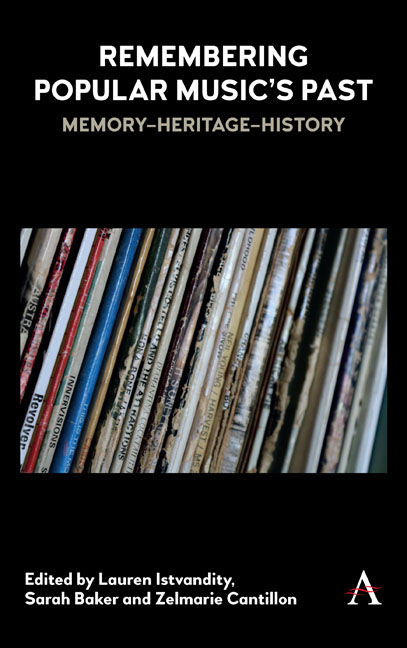Book contents
- Frontmatter
- Contents
- List of Figures
- Acknowledgements
- Chapter 1 The Precarity of Memory, Heritage and History in Remembering Popular Music's Past
- Part I MEMORY
- Chapter 2 Consuming Popular Music Heritage
- Chapter 3 ‘Back in the Day’: Experiencing and Retelling the Past as a Claim to Belong in the Current Northern Soul Scene
- Chapter 4 Resilience and Change: Popular Folk Songs in a Cultural Landscape
- Chapter 5 Remembering the Independent Record Shop: The Ordinary Affects of Leedin Records
- Chapter 6 Mean Streets as Heritage Object: Music, Nostalgia and the Museumification of Martin Scorsese
- Part II HERITAGE
- Part III HISTORY
- List of Contributors
- Index
Chapter 2 - Consuming Popular Music Heritage
from Part I - MEMORY
Published online by Cambridge University Press: 09 July 2019
- Frontmatter
- Contents
- List of Figures
- Acknowledgements
- Chapter 1 The Precarity of Memory, Heritage and History in Remembering Popular Music's Past
- Part I MEMORY
- Chapter 2 Consuming Popular Music Heritage
- Chapter 3 ‘Back in the Day’: Experiencing and Retelling the Past as a Claim to Belong in the Current Northern Soul Scene
- Chapter 4 Resilience and Change: Popular Folk Songs in a Cultural Landscape
- Chapter 5 Remembering the Independent Record Shop: The Ordinary Affects of Leedin Records
- Chapter 6 Mean Streets as Heritage Object: Music, Nostalgia and the Museumification of Martin Scorsese
- Part II HERITAGE
- Part III HISTORY
- List of Contributors
- Index
Summary
‘Is There Anyone Out There?’ is the title of a single released in 1986 by Mighty Mighty, a pop band based in the city of Birmingham, United Kingdom, and which achieved some success as part of the then burgeoning independent sector (Hesmondhalgh 1997; King 2012; Ogg 2009). The lovelorn lyric captures youthful romantic angst, but was more recently coined as a rhetorical challenge in the title of the exhibition ‘Is There Anyone Out There?’: Documenting Birmingham's Alternative Music Scene 1986–1990 which took place at the Parkside Gallery, Birmingham City University, in May 2016. This exhibition sought to document aspects of the city's music scene by focusing on the Click Club, a venue brand and alternative disco night founded in the same year as the Mighty Mighty release (the band played at the venue several times) by entrepreneurs Dave Travis and Steve Coxon. ‘Is there anyone out there?’ was a means of asking who was out there that might know about and contribute to an understanding of the Click Club and, indeed, was there anyone else who would be interested in this as the subject of an exhibition?
Following a mould now familiar to popular music heritage practice, the exhibition was a means of retrieving the intangible culture of the Click Club and celebrating its 30th anniversary. For the author, by no means incidentally an original attendee of the Click Club, involvement in the origination and curation of this exhibition presented a number of research opportunities regarding popular music heritage. It allowed an exploration of the club's wider place in the culture and economy of Birmingham and assessment of its significance for original attendees. As an experience of curation as public history practice, developing the exhibition also prompted questions about the nature of visitor engagement and responses to music heritage as concept and event.
This chapter first outlines some salient historical details about the Click Club and the origins of the exhibition, which lie in the formation of an online archive and community of interest. The process of exhibition development is contextualized in relation to current scholarly perspectives on popular music heritage, archives, history and memory, positing curation as a research method.
- Type
- Chapter
- Information
- Remembering Popular Music's PastMemory-Heritage-History, pp. 11 - 26Publisher: Anthem PressPrint publication year: 2019



